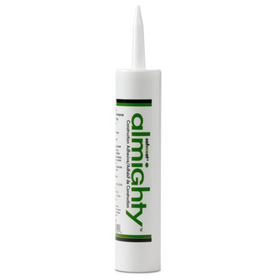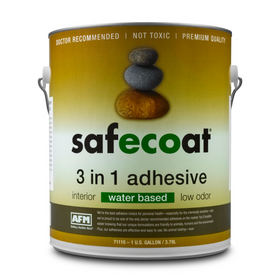
Toronto's Gemini House: Remaking an 1870s Masonry Home
Last Updated: Mar 20, 2025In many ways, homes built a hundred or more years ago were built sturdier than many of the cheap and shoddily built plywood and 2x4 stick homes of today. Strong brick walls and rugged hardwood timber were characteristic of some of the homes built by our ancestors, many of which are still standing today. However, suppose you have ever spent a significant amount of time inside a one-hundred-year-old home. In that case, the chances are that you have felt how the weight of time and gravity has led to a few drafty windows, creaky floorboards, and inefficient insulation.
Table of Contents
- A Box within a Box
- Energy Efficiency Measures
- Final Words

Unfortunately, thousands of old homes are torn down every year as homeowners consider new construction to be a sounder investment and better use of their money. From an ecological standpoint, however, studies have shown that the greenest building is almost always the one that is currently standing due to the embodied energy associated with the modern-day home built with a variety of building materials sourced from around the world.

In Toronto, Canada, the renovation of the Gemini Home offers a unique opportunity to see how areas with older homes can radically transform the energy performance of these structures while maintaining them intact. This low-energy retrofit of a masonry home built almost 140 years ago is a living example of how older structures can be rescued from demolition, allowing homeowners to enjoy the structure's sturdiness while benefitting from 21st-century energy-efficient standards and a livable contemporary interior.
The retrofit of the Gemini Home, situated on the campus of the University of Toronto, has been the result of a long-term collaboration in low-energy retrofit research between the University of Toronto and Ryerson University.

A Box within a Box
A century and a half ago, it was probably much easier to source dozens of cords of firewood in the Toronto area to keep a massive (and slimly insulated) masonry home warm during the cold winter months. Today, however, homes like the Gemini House are incredibly energy-intensive and require an extensive amount of fossil fuels or electricity to keep the home at a comfortable temperature.
In Canada, buildings account for one-third of all energy consumption and 35 percent of greenhouse gas emissions. Older, energy-inefficient homes are responsible for much of this pollution. On the other hand, buildings in Canada also amount to a massive 50 percent of natural resource consumption, and much of that stems from new home construction.

The restoration of the Gemini House aimed “to provide an alternative way of retrofitting historic buildings using “Nested Thermal Envelope Design (NTED) approach.” In essence, this approach sought to build a “box within a box” through including two thermal envelopes divided between core and periphery areas of the home. Both thermal envelopes can control the movement of air, moisture, and heat, while the core area of the house is where most of the active heating and cooling happens.
For the Gemini House, the core area includes the kitchen and dining room and the master bedroom and bathroom. The periphery areas include the basement, a ballroom, and upstairs guest bedrooms. The retrofit strategy centered on pulling in the interior walls to increase the amount of high-performance insulation drastically. Both the core and periphery areas of the home are insulated separately from one another and are controlled by their thermostats. Thus, you could have one area of the house a toasty 70 degrees in the middle of the winter while the unused periphery area is significantly colder.

While the University of Toronto expects to use the home to host visiting professors (in the core area), its spacious ballroom or meeting room could also be used for larger events. Because of the “box within a box” design, the occupants can choose to only heat the parts of the house being used. The less square footage needs to be heated or cooled, the less energy required. The perimeter area of the home also acts as a solar recovery zone allowing for passive solar heating that even further reduces the energy demands of the house during the winter.

The complete redesign of the two separate “regions” of the home's interior essentially obligated the builders to build two sets of windows at each opening. The extra space for insulation means that a full-sized person can stand in the space between the two sets of windows.

Energy Efficiency Measures
Besides dividing the spacious 19th century home into two core and periphery that are heated separately, the Gemini House also includes several other energy efficiency measures and technologies. The home relies on a radiant floor system for heating while also including a heat pump as an alternative heat source.
Two energy recovery ventilators, or ERVs, were placed in the insulated basement crawlspace to condition incoming air for both the core and periphery areas of the home. The old windows were replaced with high-performance, triple-glazed windows everywhere except on the façade of the house where the university wanted to maintain the heritage look. The old windows that were replaced were used as storm windows in other areas of the home as a way to upcycle old but serviceable building materials.

For insulation, the floors were also super-insulated to protect the radiant floor system, which meant that the staircase was also raised. Since the ballroom is separated from the core of the home, a pair of heavy double doors helps to protect against any potential heat loss.

Final Words
The Gemini House retrofit project has proven that older, historic homes do not need to be torn down to have an energy-efficient home. Through the retrofits described above, the Gemini House has achieved an R2000+ envelope while also allowing the home to take advantage of solar gain and storage. The unique NTED design approach gives occupants maximum flexibility for heating and cooling the home according to their needs.
According to modeled energy performance tests, these retrofits should allow the Gemini House to use a third of the amount of energy utilized by baseline homes, even though the original construction is 140 years old. Not only has this retrofit strategy prolonged the service life of a sturdy, well-built home, but it also drastically reduced space heating needs while also increasing occupant comfort levels.
New home construction might also consider the “box within a box” design as the cost of turning a newly built home into a Gemini home following the NTED design approach could be done for as little as a 10 – 15 percent increase in the construction budget.
Tobias Roberts
Tobias runs an agroecology farm and a natural building collective in the mountains of El Salvador. He specializes in earthen construction methods and uses permaculture design methods to integrate structures into the sustainability of the landscape.










